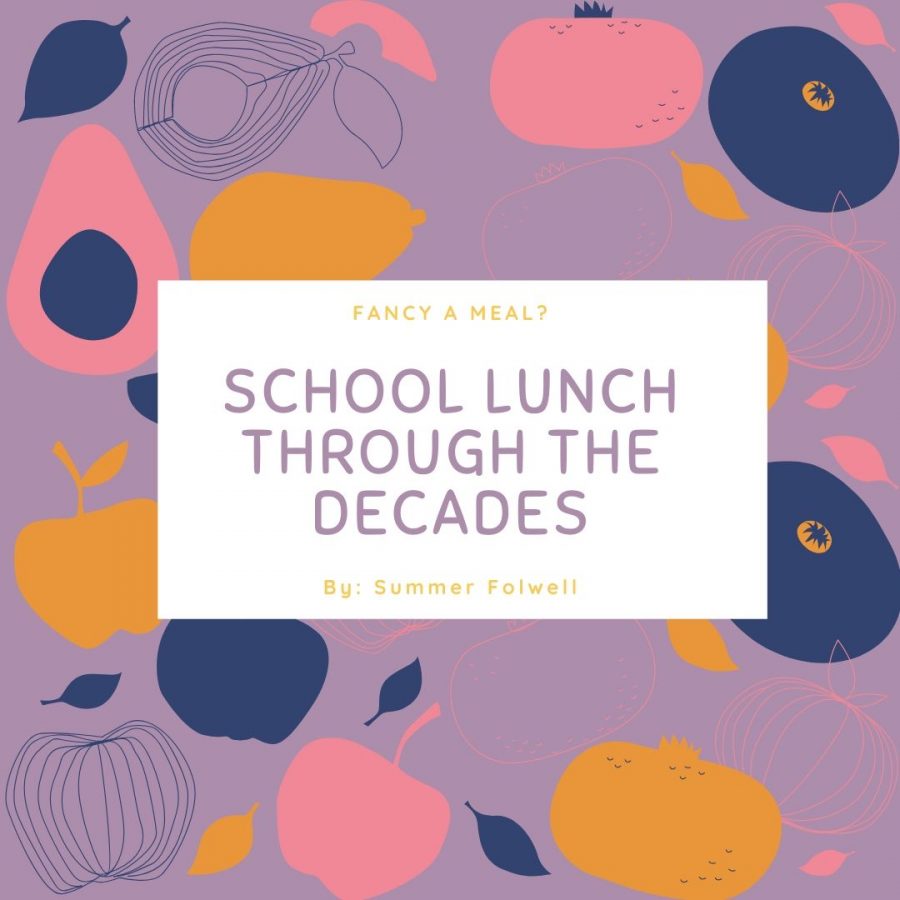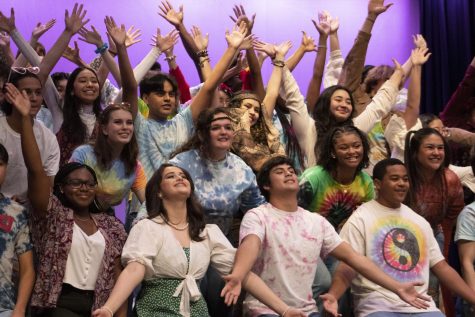School Lunches Through The Decades
February 27, 2020
From going home for each lunch to having breakfast and lunch lines with different food in each one, school lunch has changed so much over time.
1900s:
School lunch in the early 1900s wasn’t much of a thing. Most of the time you went to school part of the day and went to work. Only a few places even had a lunch provided, like in Boston and Philadelphia, where the Women’s Education and Industrial Union provided lunch. With little to no food provided for the kids, concerns of malnutrition grew.
1910s-1920s:
By 1912, though, more schools across America were providing school lunches through groups like the New York School Lunch. Lunch consisted of beef, a light soup, bread, or potatoes, and it usually cost around a penny. Providing lunch in school proved to help the kids mentally and physically, as they seemed to learn better without hunger pains at the back of their brain.
1930s:
Once the Great Depression was over, the farmers, now in financial ruin, couldn’t find work and couldn’t provide the programs with food. The majority of the schoolkids were poor and were not able to pay for school lunches, so starvation and malnutrition rates skyrocketed. To solve these issues, the federal government started to work with school lunch programs. The government gave the farmers money by buying their extra crops and employed women to serve food in the schools to the hungry kids. By the 1940s, school lunches were a federally funded program in all states.
1940s:
The school lunch programs were a success and helped provide a healthy nutritional meal to students everyday, but this success was short lived with the food shortages from WWII. Soon after the war ended, the National Lunch Act was passed in 1946; this provided aid to the states with paying for and providing food for the schools.
1950s-1960s:
In the decades following, the government was trying to find more ways of expanding the program to reach all students. Subsidies for low income students were created, and school breakfasts started to rise in popularity.
1980s-1990s:
As the government tried to reduce the amount of waste they produced, they cut spending for school lunches by $1.5 billion. This caused a catastrophe among schools. The number of free and reduced lunches provided were cut in half, and nutritional value in the foods they were serving went down as they were forced to look elsewhere in cheap, unhealthy meals. Without as much federal funding schools went to private investors such as fast food chains to provide food for school lunches. With little no nutrition in meals, obesity rates were at an all time high. The government once again became more involved with school lunches because of the debate over obesity or government spending.
2010s:
To regain the once healthy standing of school lunches Congress, with the help of First Lady Michelle Obama, passes the Healthy, Hunger-Free Kids Act of 2010. Although the debate that the food doesn’t taste as good and more food is going to waste is still at large. Most can agree that school meals are doing exactly what they originally were supposed to, they’re helping kids be healthy and focus in school.













